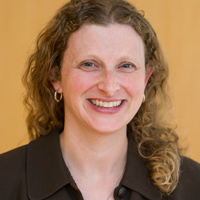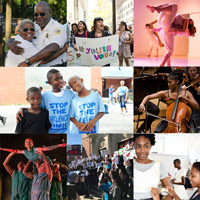Senior Program Officer Cate Fox shares how the Arts & Culture Loan Fund helps arts organizations stabilize their finances and gain financial expertise through training, so they can build resiliency and take risks.
Artists want to make art, not produce quarterly financial forecasting documents. But often they find themselves having to be both artist and chief financial officer, creative innovator and building manager. The Foundation supports more than 300 arts organizations in the City of Chicago, and we often hear that budgeting is very difficult for these nonprofits. For arts organizations, budget models tend to be risky. They require organizations to spend money building an artistic idea with the hope that once it is created the organization will be able to recoup what was spent.
Artists and creatives often approach close friends and family or board members for loans because they feel that financial institutions do not understand what they do. Even if the banks understood, they would be hesitant to take perceived risks. This circumstance can be amplified if the artist is a person of color or from a disinvested community. MacArthur’s Arts & Culture Loan Fund responds to barriers like these with more equitable access to loans and opportunities for institutions to build strength.
A core part of the program is to translate between two professions whose language is unfamiliar to the other. To support the Loan Fund, we partner with the financial experts at FMA, a financial management consulting service, that understands both the nonprofit world and the banking world. They work with arts organizations to better articulate the organizations’ financial picture and goals in a language that is understandable to both the organizations and financial institutions.
Arts organizations can opt-in for more intensive financial management workshops with FMA, where teams of arts administrators and board members work together to build knowledge and systems for their organizations. Participants tell us that the workshops increase staff leaders’ comfort and understanding of the financial side of running an arts organization. We have also heard that by demystifying the nonprofit business model, the workshops fundamentally change the interaction between nonprofit boards and staff in positive ways. They use the words “transformative” and “life-saver” to describe the program.
The Loan Fund is just one of the ways the Foundation supports the creative life of the city. In fact, with more than 25 loans in use at any one time, the Loan Fund is a small part of a larger portfolio that has an emphasis on general operating support and capacity building. But Allison Clark, who is Associate Director of Impact Investments and my Foundation partner in this work, and I talk about this program as small and mighty. The Loan Fund unlocks essential capital. When MacArthur created the Arts & Culture Loan Fund a decade ago, we expected that it would be a tactical tool that provided flexible funding to organizations to address the seasonality of cash flow. What we learned is that in addition to meeting tactical goals, it is also a strategic investment in building resiliency for arts organizations.
Also of Interest
Learn more about how our Arts & Culture Loan Fund helps local arts organizations stabilize their finances in our latest Chicago Story: Nonprofits and the Art of Financial Stability.






